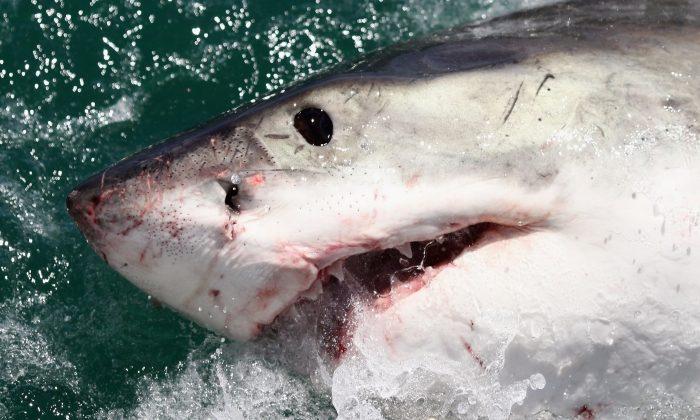A fisherman in Australia has found the head of a large shark, with bite marks from an unknown—but likely massive—ocean predator.
Jason, who posted the impressive find on Facebook under the alias Trapman Bermagui, wrote that he was shark fishing off the coast of Bermagui when he stumbled across the 200-plus-pound mako shark head.
“So this was all we got back of this monster mako,” he wrote beside a photo of a young man standing behind the severed shark head. “Unfortunately we didn’t see what ate it but must of been impressive!!”
“It was a crazy morning of shark fishing. Hoping to catch smaller sharks but just hooked big sharks that got eaten by bigger sharks again.”
Staged?
Some commenters suggested the photo was staged to make it appear that the shark was bigger than it really was.Facebook user Rodney Wade wrote, “The fact that you can’t see his feet shows how horribly staged this photo is. Shark probably weighed 150lbs.”
Trapman Bermagui posted another photograph of the same shark, this time with a different camera perspective.
While the different perspective makes the shark head seem smaller, the creature in the photo is still evidently large.
Shortfin Mako Sharks
According to the MarineBio Conservation Society, mako sharks are known by many names: makos, shortfins, short-finned makos, blue pointers, mackerel sharks—even blue dynamites.They are known for their speed and agility in the water, and in bursts can swim as fast as 50 mph.
Mako sharks can grow as large as 12 feet in length and have been known to weigh as much as 1,000 pounds.
A Danger or Endangered?
Sharks in their interactions with humans have acquired a fearsome reputation that, according to National Geographic, is not justified.Data from the Florida Museum of Natural History’s International Shark Attack File (ISAF), a database of all known shark attacks, shows that humans pose a greater threat to sharks than vice versa.
“On average, there are only six fatalities attributable to unprovoked attacks by sharks worldwide, each year. By contrast, fisheries kill about 100 million sharks and rays annually.”






Friends Read Free